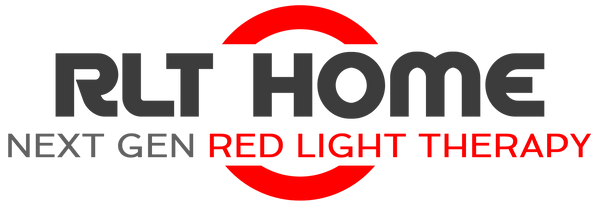830nm Near-Infrared: Deep-Tissue & Neuro Support
830nm sits in the near-infrared (NIR) “therapeutic window,” reaching deeper than visible red while maintaining strong interaction with mitochondrial cytochrome-c oxidase. In human studies, 830nm supports pain reduction, functional recovery in joints and tendons, spine care, and brain-directed applications via transcranial PBM (tPBM). LED delivery makes it one of the most practical and powerful red light therapy panels for at-home use.
Table of Contents
Research Summary (Human-focused, 830nm): Our dataset of 337 studies shows:
- Very successful: 171 (51%)
- Somewhat successful: 94 (28%)
- No effect: 72 (21%)
Overall success: 265/337 ≈ 79%. Outcomes are dose- and protocol-dependent.
Bioequivalent Wavelengths: 800–850nm
830nm shares optical and biological behavior with nearby NIR wavelengths (e.g., 820nm). When dose is matched, clinical effects are similar due to overlapping absorption and tissue optics. Compared with 660nm, 830nm penetrates deeper and is frequently used for muscles, joints, tendons, and tPBM.
Conditions Benefiting from 830nm
- Brain & cognition: attention and EEG changes after NIR exposures; symptom support in neuro and developmental contexts [1][2][3][4]
- Exercise & performance: reduced soreness and better recovery metrics around training [5]
- Tendinopathies: pain/function gains with structured multi-week protocols [7][8]
- Knee osteoarthritis: adjunct improvements in pain and function [9][10]
- Peripheral pain syndromes: signals across multiwave and 830-specific programs [11][12]
Applications in Brain & Cognition
Human EEG and cognitive studies report improvements in attention/alertness and neurofunctional measures following prefrontal NIR exposure, with some long-term follow-ups in neurological cohorts [1][3][4].
Attention & EEG
Single-session NIR exposures have shown measurable changes in attention and EEG activity, consistent with transient cognitive enhancement [1].
Neuro Support (tPBM)
Transcranial PBM has demonstrated feasibility and benefit signals in adults with neurological conditions over multi-session programs [3][4].
Applications in Muscle, Joint & Pain
830nm reaches deeper targets than red light, making it suitable for large muscle groups and tendon insertions.
Exercise Recovery
Using a single dose of PBM around strenuous exercise has been associated with reduced soreness and better early recovery metrics when energy density and timing are optimized [5].
Lateral Epicondylalgia
Clinical work shows pain reduction and functional improvement with repeated PBM sessions, especially when combined with exercise or manual therapy [7][8].
Knee Osteoarthritis
Adjunct PBM has reported improvements in pain and functional outcomes vs. control or standard care alone in knee OA cohorts [9][10].
Applications in Spine Care
830nm has been tested as part of multimodal care in cervical and lumbar pain, including randomized and single-blind designs.
Neck & Low-Back Programs
Trials using 830nm or multiwave PBM report pain reduction and better function/ROM as adjuncts to rehab pathways [11][12][14].
Applications in Post-Op, Dermatology & Dental
Post-Op Recovery
PBM has been studied for pain and swelling control after spinal disc herniation surgery with positive single-blind randomized data [14].
Dermatology & Resurfacing
Combined visible + NIR LED has been used to enhance healing and comfort after ablative resurfacing of photodamaged facial skin [15].
Dental Care
PBM has been studied for alleviating post-operative discomfort in dental applications [13].
Choosing an LED Device for 830nm
RLT Home panels in the Total Spectrum series include a dedicated 830nm channel alongside complementary red and NIR wavelengths to cover all tissue depths.
- Clinically relevant irradiance at distance so sessions are practical (minutes, not hours)
- Uniform LED density for even dosing across large areas
- Pulsing + continuous modes for protocol flexibility
- Low flicker, low EMF and precise wavelength calibration
- Multi-wavelength synergy with 660/810/850/1064nm
Safety & Dosing Notes
Human studies report a favorable safety profile for 830nm. Effects are biphasic; under-dosing may be ineffective and over-dosing can blunt gains. Start conservatively, progress gradually, and keep cadence consistent. For specific protocols, always refer to the official Total Spectrum Usage Guide.
- Consult a clinician if pregnant, photosensitive, on photosensitizers, or under oncology care.
- Avoid direct eye exposure; use tPBM within conservative session times.
- Use as an adjunct to standard care.
References
- Effects of Near-Infrared Pulsed Light on Attention (EEG)
- Transcranial Photobiomodulation for Down Syndrome
- tPBM with NIR: Human Cognitive/Clinical Measures
- Long-Term NIR PBM in Neurological Contexts
- Single-Dose PBM Around Strenuous Exercise
- PBM and Trunk Muscle Endurance (Training Adjunct)
- Treatment of Medial/Lateral Epicondylitis with PBM
- PBM Combined with Eccentric Exercise (Elbow)
- Low-Level Laser in Knee Osteoarthritis
- High-Intensity vs. Low-Level Laser in Knee OA
- Multiwave Locked System Laser for Peripheral Pain
- 830 nm Laser on Chronic Neck Pain
- PBM Alleviates Post-operative Discomfort (Dental)
- PBM on Pain/Scars After Disc Herniation Surgery (RCT)
- Combined Visible + NIR LED After Facial Resurfacing







